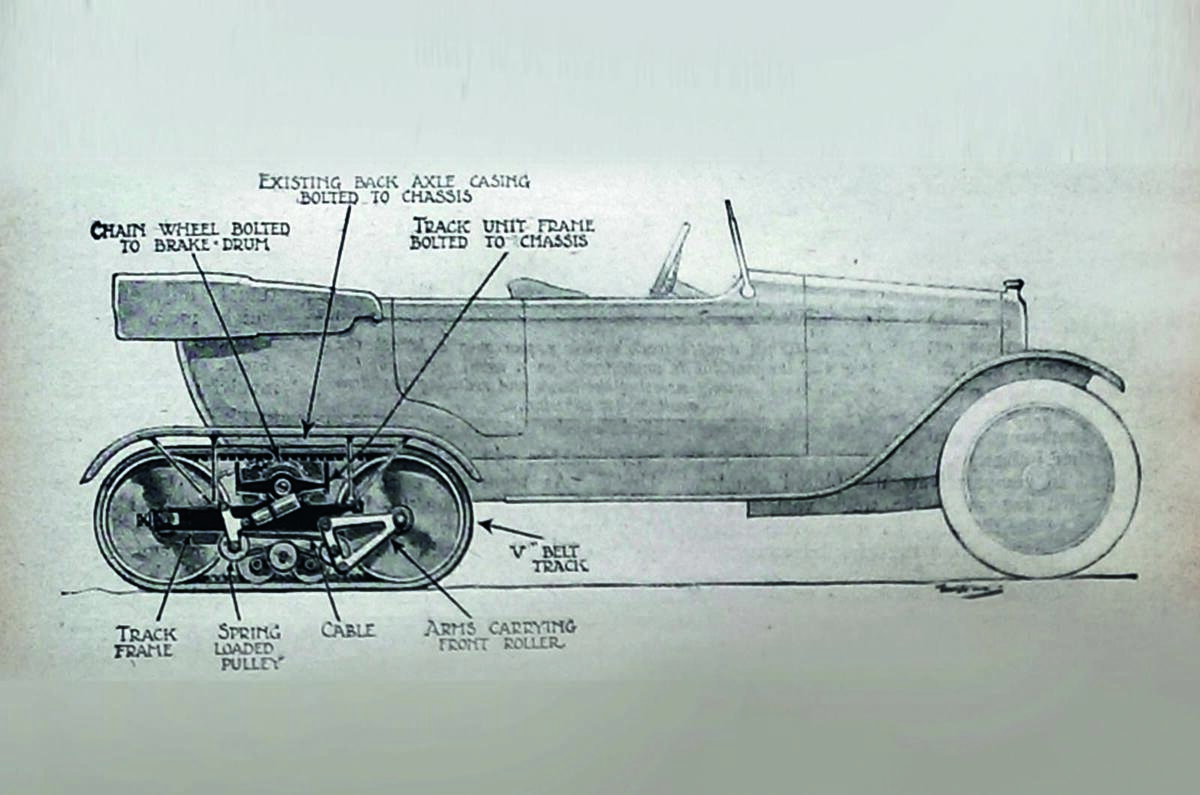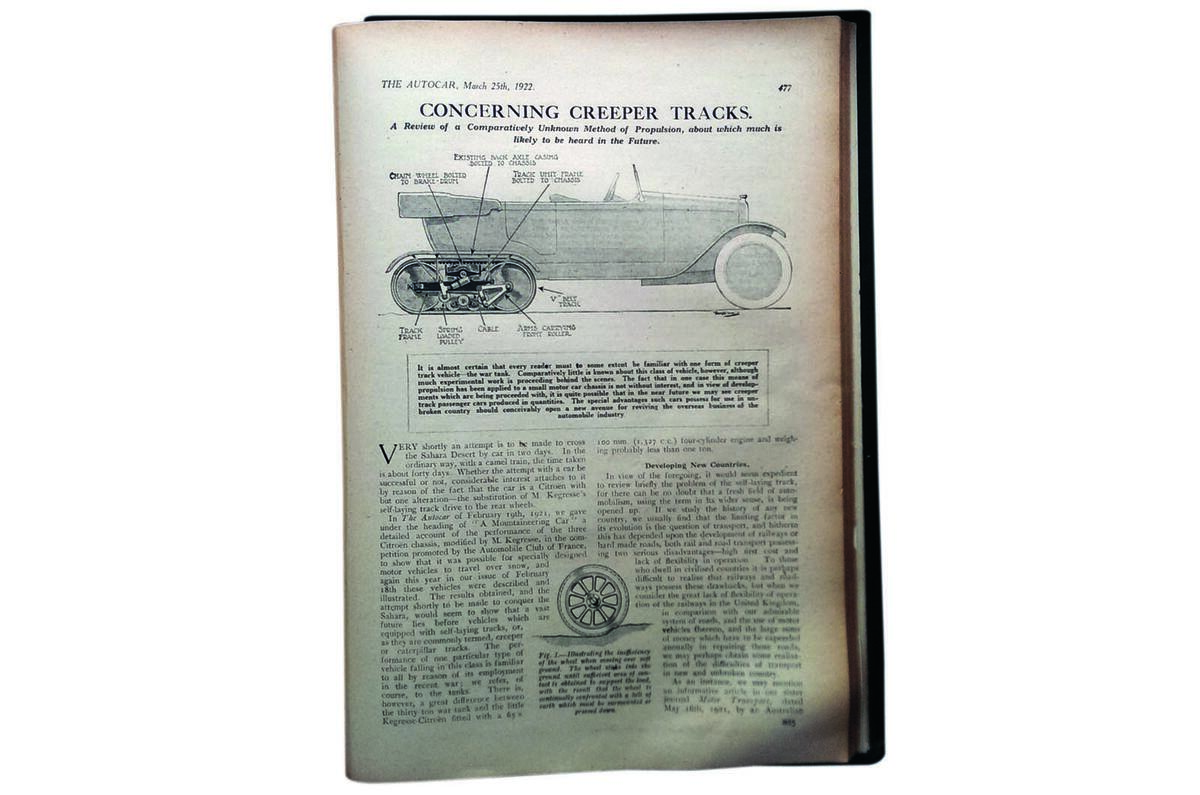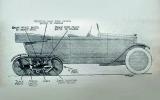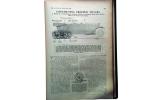These days, mainstream car makers don’t have a habit of developing vehicles with tank-style caterpillar tracks on their rear axles.
In the early 1920s, however, there was a good argument for tracked vehicles, especially in less hospitable regions of the globe.
“A vast future lies before vehicles which are equipped with self-laying tracks,” proclaimed Autocar in a 1922 article.
“If we study the history of any new country, we usually find that the limiting factor in its evolution is the question of transport, and hitherto this has depended upon the development of railways or hard-made roads. There is an urgent need for vehicles which can operate freely over unmetalled paths or virgin land.
“The capability which these creeper track vehicles in general possess of covering soft ground is due to the fact that the load is distributed over the whole area of contact of the track with the ground, whereas with a wheeled vehicle the area of contact of the wheels with the ground is extremely small.”
There were some drawbacks to creeper tracks, Autocar noted: “One difficulty has been the absence of an efficient system of compensated springing to enable a perfect distribution of weight to be obtained in crossing rough or uneven ground.
"It is easy when passing over an undulation for half the weight of the machine to be borne on a very small area, the result being that the ground is flattened, or the machine is lifted bodily over the obstacle.
“One effect of this absence of compensation is that the tracks arefrequently overloaded and have a very limited life in such cases.”
A potential solution was at hand, though: “A system of springing which has been termed ‘cable suspension’ has been applied with every success.
“When the machine passes over an obstacle, the roller immediately above the obstacle rises against the tension of the cable and passes over the obstruction without appreciably affecting the level of the chassis. It is thus obviously impossible to exert undue pressure on any part of the track or ground.”
Creeper tracks also reduced wear on roads. “Probably many motorists have had occasion to notice the road surface after the passage of one of the war tanks and, despite its 30-tonneweight, they will doubtless have observed that no damage has been done. This is due to the uniform distribution of the load,” said Autocar.
“As the great portion of the world’s surface is not yet provided with roads, it would appear that a vast future lies before the creeper track. Its use upon the roads of this country would possibly be the means of solving the vexed question of road maintenance by lessening wear.”
Previous Throwback Thursdays
4 March 1899 - Steam, electric or combustion engine?
14 February 1913 - 100 miles in one hour
2 February 1934 - The ethics of skidding
21 January 1949 - Tidier tails
27 January 1961 - Ford Thunderbird road test
19 January 1980 - Talbot Horizon road test
13 February 1982 - 4x4s tested on the farm
16 March 1994 - Bentley's Concept Java
16 April 1997 - When Bugatti bit the dust
Get the latest car news, reviews and galleries from Autocar direct to your inbox every week. Enter your email address below:







Join the debate
Add your comment
Quite a common Monster truck
More of this sort of feature please.